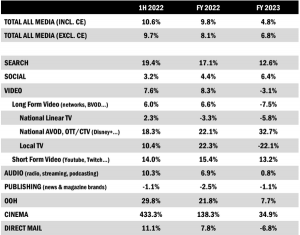
There are two viewpoints to take when answering the question; is your team better with or without you. It all depends on what is more important to you as a manager. Let’s break both sides down.
Is Your Team Better With You or Without You?
The Better With You Manager
Some managers want to be the center of attention, the star. They want the bosses to know how important their contribution is to the team. They work long hours and usually micromanage their employees. They may also have a heavy-handed management style where no decision can be made without their input or approval.
As a matter of fact, A survey conducted by Trinity Solutions and published in author Harry Chambers’ book, My Way or the Highway, showed that 79 percent of respondents had experienced micromanagement. Approximately 69 percent said they considered changing jobs because of micromanagement and another 36 percent actually changed jobs. Seventy-one percent said being micromanaged interfered with their job performance while 85 percent said their morale was negatively impacted. (Above, taken from the March 31, 2015 PA Times.)
The “better with you” managers (BWY) love to be the ringleader, directing their troops during their day-to-day tasks. Upper management thinks they’re great and sees their active involvement each day. This manager is good, really good, and the bosses wonder what they would ever do without him.
But what happens when this manager calls out sick or goes on vacation? Who leads the troops? Who is there to direct them? Who is there to approve the daily decisions that must be made? That’s the problem with this style.
Do You Trust Your Team?
The “BWY” manager has developed a system that revolves around him and his daily actions. When he’s there, it works. But in his absence, his team is not used to working autonomously, or under the temporary supervision of a junior or lateral manager from another department (assuming they came to assist in the manager’s absence). There are no hourly supervisors or employees in leadership roles. They’ve rarely been allowed to lead or make decisions on their own and now feel lost and without direction. It all went through the BWY manager. So, they flounder.
Tasks get delayed, standards and procedures are not followed, and the employees bicker with one another. “Let’s do it this way”, one says, only to be shot down by another who thinks they have a better way. Before long, chaos erupts, and little gets done – at least little gets done well. Internal friction boils over and once-friendly teammates now see each other as self-centered and rude.
When the BWY manager returns, he’s told things have gone poorly in his absence. His team failed to perform as before, and productivity suffered. Worst yet, the customers have noticed the disruption in service and now his management and leadership style is questioned.
How did it all fall apart so quickly? To answer that, let’s look at the better without you manager.
The Better Without You Manager
The “better without you” manager (BWOY) is a strange one. She too is good at her job but her downfall is being unorganized and a poor communicator. Talk about chaos. It’s an everyday occurrence with her team. Let me restate that – the BWOY manager creates the chaos. Her team is actually well qualified and experienced, but you’d never know it by observing her team at work.
The BWOY manager decides to make a change in procedure or sets unrealistic tasks without preparing her team ahead of time. Most employees do a fine job when they know what’s expected of them and given the tools to do their job. But this doesn’t happen with the BWOY manager. Example:
The big boss requested a new completion date for an upcoming project, a date with no flexibility. The BWOY manager sat on the information for weeks because she’s too busy “putting out fires” from earlier tasks which were hastily completed. Now her team has only days to complete this big project; most of which will have to be completed during the regular workday in addition to the normal workload.
This creates unnecessary stress and confusion for her team and resentment quickly sets in. It turns out that her two supervisors have already discussed how and when this project should start and are looking forward to its completion. Every time they brought it up to the BWOY manager, it’s brushed-off until later. Projects come to a standstill or are attempted without clear guidelines and need revisions later.
So, what’s the answer? If both management styles have faults, what is the solution? Well, it’s a combination of the two.
What is the Best Way to Build an Effective Team?
Hybrid Management
There is no one “right” way to manage a team. It depends on a myriad of factors:
- Skillset
- Respect
- Adaptability
- Communication
- Employee morale
- Industry knowledge, etc.
And that is just some of the things the employees need. Management needs these too and so much more.
The best managers know how and where they fit in. It’s not the military. Simply barking orders won’t get the work done, at least not as intended. And taking a hands-off approach leads to disorder in most situations.
Wise managers have learned from experience. Mistakes made and solutions found create pathways to success.
3 Ways to Improve Teamwork and Employee Morale
1. Autonomy
Employees need autonomy and the ability to make their own decisions on how to serve others (within certain guidelines, of course). Using a hybrid style will provide the psychological need of self-direction while still working within the company framework. Proper communication is the key when allowing a team to chart their own path. They must also know the limits of their decision-making and when they must get approval from supervision.
2. Team Approach
Management speaks of a team approach all the time but fails to consider its benefits. Fellow employees possess untapped knowledge and experience and a simple round table discussion during the initial phases will help bring out yet discussed possibilities. Good managers give serious consideration to the input of their team and welcome the open dialogue.
3. Give Control
Wise management knows when to loosen the reins of supervision. They identify the best time to give oversight to a qualified employee who will direct a specific task or project. This instills pride and ownership to the individual and may identify a future leader. Under certain conditions, giving control to a team member will also create friendly competition leading to even greater ideas and productivity.
In the end, the final results will prove which management style works best for you. The only challenge is being willing to loosen the hold of management to allow a specific style to rise and prove it’s worth and benefits to the company and its customers.
Is your team better with or without you? I’d love to hear the answer.
Business & Finance Articles on Business 2 Community
(44)
Report Post







